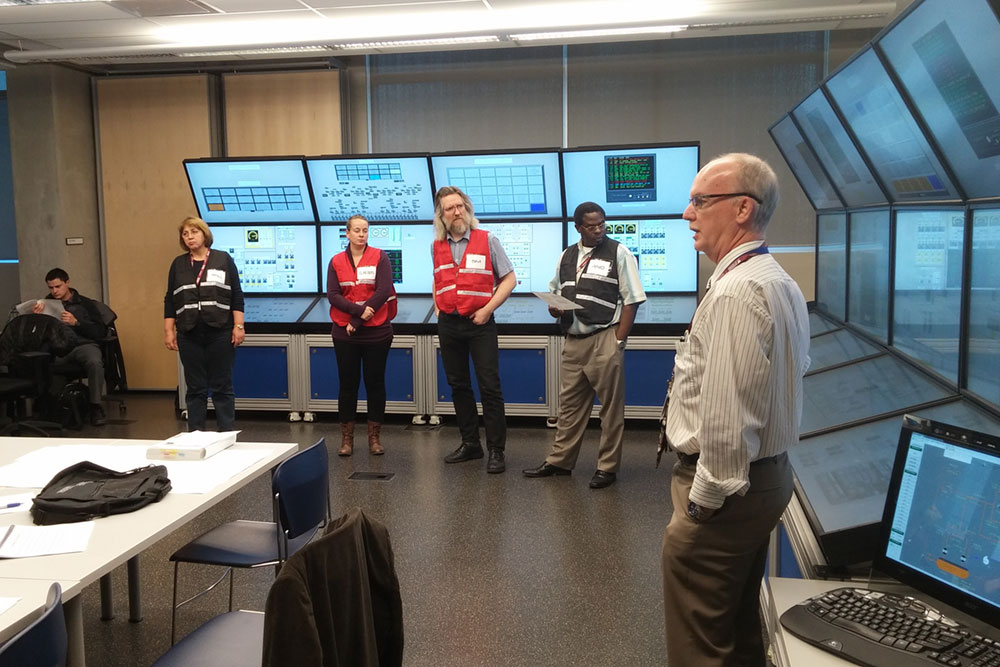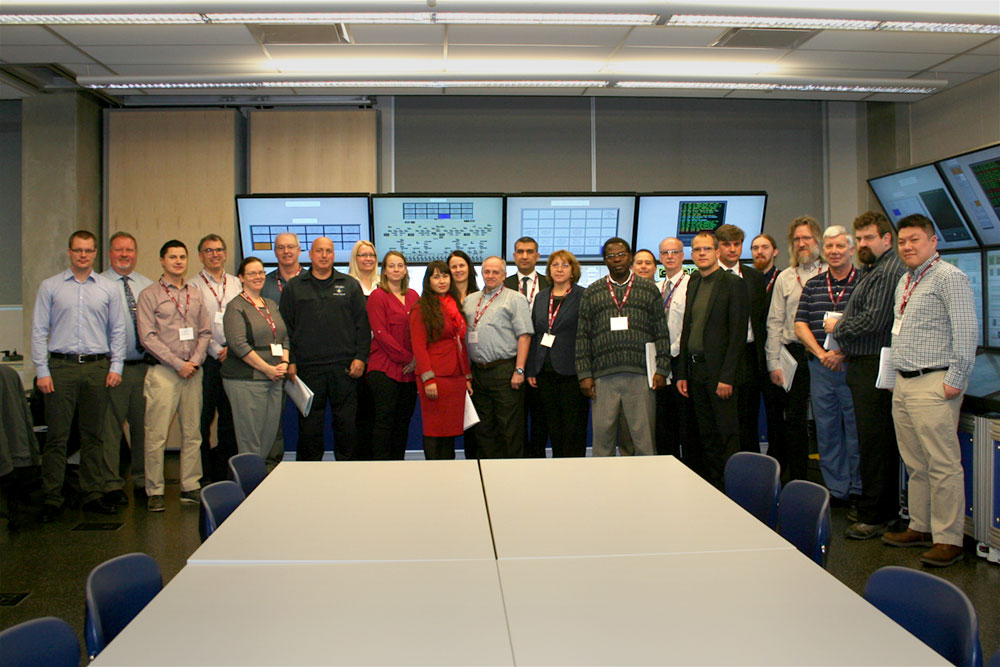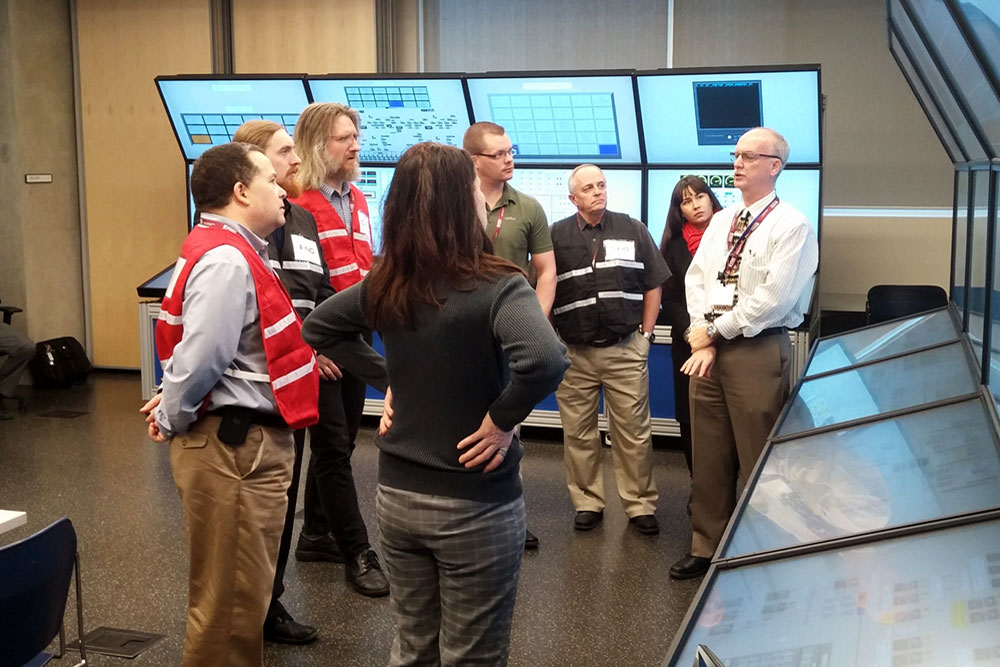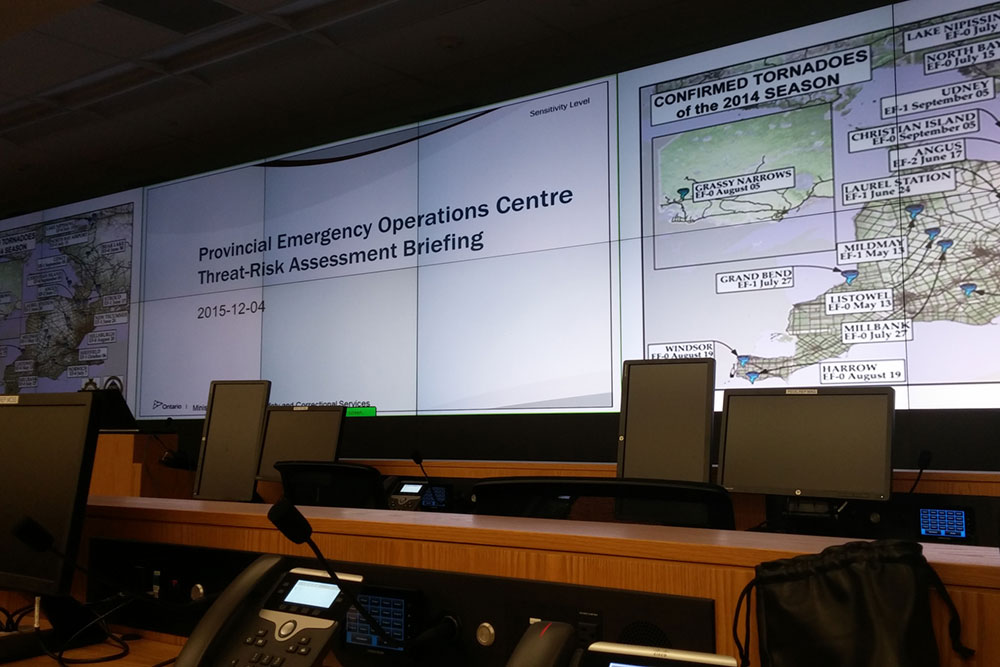UOIT showcases nuclear safety expertise for international audience
University hosts nuclear power plant emergency simulation workshop
January 22, 2016
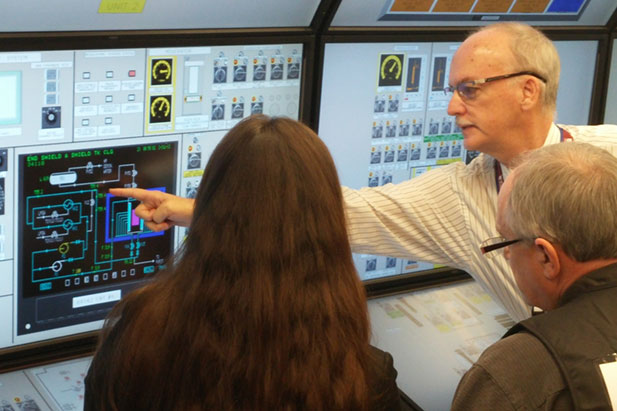
The University of Ontario Institute of Technology (UOIT) enjoys a strong reputation in the nuclear industry for having some of the best nuclear engineering labs and research infrastructure in Canada.
UOIT’s Faculty of Energy Systems and Nuclear Science (FESNS) had an opportunity to showcase its outstanding facilities in December 2015 when the International Atomic Energy Agency (IAEA) invited experts from across the country and around the world to Oshawa, Ontario for a nuclear power plant emergency simulation workshop. Participants also included two UOIT graduates now working with the Canadian Nuclear Safety Commission: Ki Cheung Leung (Nuclear Engineering) and David Wallace (Radiation Science).
Held over five days at the university, the IAEA’s Incident and Emergency Centre (IEC) gave off-site responders an appreciation of the detailed activities faced by those in a nuclear power plant control room during emergency situations. The lead instructor was John Shaw, who teaches in the Advanced Operations Overview for Managers program FESNS conducts for the nuclear industry.
The university’s Nuclear Simulation Laboratory, which houses a state-of-the-art computer and display system for the operation and simulation of nuclear power plants was an ideal workshop setting. The virtual nuclear power plant simulator uses software developed by Ontario Power Generation (OPG) that simulates the operation of the Pickering and Darlington nuclear-electric generating units. FESNS also has the capability to develop software for advanced reactor designs within the lab.
Quotes
“The University of Ontario Institute of Technology’s (UOIT) undergraduate and graduate programs in Nuclear Engineering feature the most extensive nuclear power plant computer simulation of any engineering program in the province. The IAEA wanted a workshop to show emergency responders what an evolving abnormal condition looked like from the control room perspective, and UOIT’s Faculty of Energy Systems and Nuclear Science (FESNS) has a unique training facility for this.”
-Dr. Ed Waller, Professor, UOIT Faculty of Energy Systems and Nuclear Science; and NSERC/UNENE IRC in Health Physics and Environmental Safety
“We are very proud of the strong ties we have built with the IAEA and we are honoured to host this gathering of international experts. Any emergency situation at a nuclear facility requires tight co-ordination between control room personnel and off-site responders. We maximize public safety when everyone understands the informational needs of all counterparts.”
-Dr. George Bereznai, Professor and Director, Industry Training Program; and Founding Dean, UOIT Faculty of Energy Systems and Nuclear Science
“The International Atomic Energy Agency continues to actively support member states by providing new and innovative opportunities to share knowledge and be able to better respond during a nuclear emergency. The workshop at UOIT was the first of its kind co-ordinated by the IEC focusing on control room operations with the involvement of off-site responders from all levels.”
-Joseph Chaput, UOIT Nuclear Engineering PhD candidate, and Incident and Emergency Assessment Officer, IAEA
“This workshop has been a valuable chance to consider how we interact during an emergency. Having a real appreciation of the detailed response activities that take place in the control room is very useful.”
-Luc Sigouin, Director of Emergency Management Programs Division, Canadian Nuclear Safety Commission
“Events like this are excellent opportunities to learn more about the unique operating environment at a nuclear power plant. This is very helpful for us so we are better able to support the activities of our partners during an emergency.”
-Workshop participant John Byard, Emergency Management Co-ordinator, Durham Region
